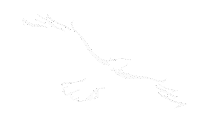Causes of the sudden evacuation of their
ancient town, as given by old traditionists--Different account obtained from
old half-breeds and traders--Evil practices become in
vogue--Poisoning--Feasts of human flesh--Ojib-ways fall under the power of
their Satanic priesthood--Anecdote of the old man watching by the grave of
his victimized child--The Ojibways become panic-stricken, and suddenly
desert the island.
For the space of three generations, or one hundred and
twenty years, the Ojibways remained congregated on the island of La Pointe,
in one extensive town.
At the end of this period, we come to a dark chapter of
their history, on which the old men dislike to linger. They are loath to
tell the causes which led to the complete and sudden evacuation of their
great village, and scattered them in bands and smaller villages on the
adjacent shores of the Great Lake, and sent many families back on the track
of their former migration to resettle the almost deserted villages of
We-qua-dong and Bo-we-ting (Ance-ke-we-naw and Sault Ste. Marie).
The old men from whom I have collected the annals of this
tribe, the better to get over this fearful portion of their history, assert
that the dispersion from the island, was the immediate consequence to their
first knowledge of the white race. Through the medium of their more eastern
co-tribes, who first obtained the commodities of the "white spirits," they
obtained a few guns and with this fearful weapon they all at once became
formidable to their old enemies, the Dakotas and Foxes, whom they gradually
drove from the vicinity of the lake shore, and caused to retreat inland
toward the Mississippi. As the war parties of these tribes came less
frequently to attack them, the Ojibways gained courage, and leaving La
Pointe, they pitched their lodges in the adjacent Bay of Shaga-waum-ik-ong,
and hunted, with comparative impunity, the larger animals which abounded in
the vicinity.
According to other accounts, the dispersion of the
Ojibways from the island of their refuge, was sudden and entire. The Evil
Spirit had found a strong foothold amongst them, during the latter years of
their residence on this island. Evil practices became in vogue--Horrid
feasts on human flesh became a custom. It is said by my informants, that the
medicine men of this period had come to a knowledge of the most subtle
poisons, and they revenged the least affront with certain death. When the
dead body of victim had been interred, the murderer proceeded at night to
the grave, disinterred it, and taking it to his lodge he made a feast of it,
to the relatives, which was eaten during the darkness of midnight, and if
any of the invited guests became aware of the nature of the feast, and
refused to eat, he was sure to fall under the ill-will of the feaster, and
become the next victim. It is said that if a young woman refused the
addresses of one of these medicine men, she fell a victim to his poison, and
her body being disinterred, her relatives were feasted on it by the horrid
murderer.
Such a taste did they at last acquire for human flesh,
that parents dared not refuse their children if demanded by the fearful
medicine man for sacrifice. And numerous anecdotes are related of
circumstances happening during this horrid period, which all tend to
illustrate the above assertions, but which the writer has not deemed proper
to introduce, on account of the bloody and unnatural scenes which they
depict. The Ojibways, at this period, fell entirely under the power of their
Satanic medicine men, and priesthood, who even for some time caused
themselves to be believed invulnerable to death. This, however, was finally
tested one night, by a parent whose beloved and only child had just fallen a
victim to the insatiable longing for human flesh, of one of these poisoners.
After interring his child, he returned at night with his bow and arrow and
watched near the grave. At midnight he saw what appeared to be the form of a
black bear, approach and commence digging into the grave. It was also
believed that these medicine men possessed the power of transforming
themselves into the shapes of animals.
But the determined father, overcoming his fear, launched
his barbed arrow into the body of the bear, and without waiting to see the
consequence of his shot, he fled to his wigwam. The next morning, the body
of one of the most malignant and fearful poisoners was found clothed in a
bearskin, weltering in his blood, on the grave of the old man's child, whom
he had made a victim.
Whether or not these evil practices were at this
particular period caused by dire necessity, either through a failure of
their crops, or by being entirely hemmed in by their enemies, as to be
prevented from hunting on the main shore, the writer is not enabled to
state, though he should be but too happy to give this as a palliating excuse
for the horrid custom he is obliged to relate, as once having been in such
vogue in the tribe of whom he is writing.
It is further stated that these evil practices were
carried on to such an extent, that the Che-bi-ug, or "souls of the victims,"
were at last heard nightly traversing the village, weeping and wailing. On
this the inhabitants became panic stricken, and the consequence was that a
general and complete desertion of the island of their refuge took place,
which left their town and fields entirely desolate, and from that time, they
have become overgrown with trees and bushes, till scarcely a vestige of
their former site is to be seen.
How far the nightly weeping of the dead, which caused this
sudden fear and panic, was drawn from the imagination of the wicked
inhabitants, or originated in the nightly secret wailings of fond parents
for victimized children, we are not able to affirm, certain it is however,
that from that time, the Ojibways considered the island as haunted, and
never resided on it till after the first old French traders had located and
built their trading establishment thereon.
When my maternal grandfather, Michel Cadotte, first built
his trading post and resided on the island of La Pointe, seventy years ago,
not an Indian dare stop over night on it alone, for fear of the Che-bi-ug,
which were even then supposed to haunt it. At that time, however, it is
necessary to state that this fear had been lately increased by a bloody
tragedy which had occurred among the first French traders who located on the
island, as will be here-after narrated. Mons. Cadotte located on the site of
the ancient Ojibway town, and at this time the ground on which had stood
their numerous wigwams, and waved their fields of corn, was covered with a
comparatively young growth of trees, and the stumps of the ancient pines
which they had cut down, were in one spot still plainly discernible.
I have already stated that the old men of the tribe are
not over communicative respecting the bad practices of their ancestors,
which we have noted in this chapter, yet though backward to mention them,
they do not altogether deny the truth of these tales, which I have learned
from the lips of old half-breeds and traders, who received the information
many years ago, from old men and women whose parents had been actors in the
bloody scenes and feasts of this period. I vividly recollect in my childhood
while residing on the very spot where these scenes had occurred, that my
mother often stilled my importunities for a story, with tales of tales
period which would fairly make my hair stand on end, and which she had
learned from an old woman who was then still living, and who was considered
to be at least one hundred and twenty years of age, from the fact of her
relating events which had occurred a century past, when she was a young
woman.
go to chapter 7
1
- 2
- 3
- 4
- 5
- 6
- 7
- 8
- 9
- 10
11
- 12
- 13
- 14
- 15
- 16
- 17
- 18
- 19
- 20
21
- 22
- 23
- 24
- 25 - 26 - 27 - 28 - 29 - 30
White Eagle Soaring: Dream Dancer of the 7th Fire








 Get
a course to promote your business online, explode your sales
Get
a course to promote your business online, explode your sales Get
software to promote your business online in less time
Get
software to promote your business online in less time Get
software to streamline your business and run it hands free.
Get
software to streamline your business and run it hands free.